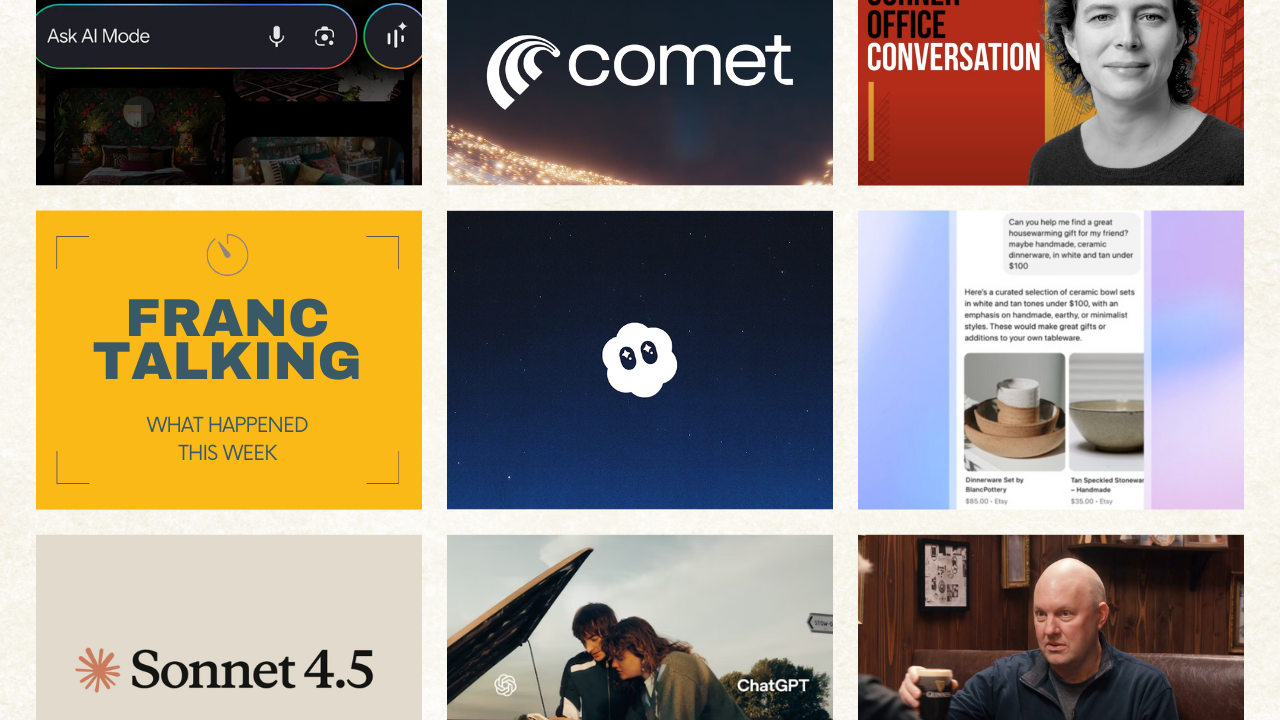5 killer charts showing why AI search is a huge business
Writing this newsletter - and being in the role that I am - I’m fortunate to read, discuss, and live many of these stories first-hand.
On Friday, we held the first-ever
Obsero Summit
- a session where we reviewed early interest, confirmed client acquisition numbers, and mapped out the product roadmap. But we also looked ahead: exploring the future of AI Search and where it’s headed.
Below, I’ve pulled together five killer charts that show why AI Search is such a massive opportunity for brands.
ChatGPT WAU global growth
One of the clearest signs of how fast AI search is scaling comes from ChatGPT’s user growth. Since launching in late 2022, weekly active users on consumer plans have soared to more than 700 million by mid-2025 - roughly 10% of the world’s adult population.
The chart shows a steep acceleration over the past year, with adoption more than doubling between early 2024 and 2025, underscoring just how quickly conversational AI has become a mainstream gateway for information - and increasingly, for commerce.
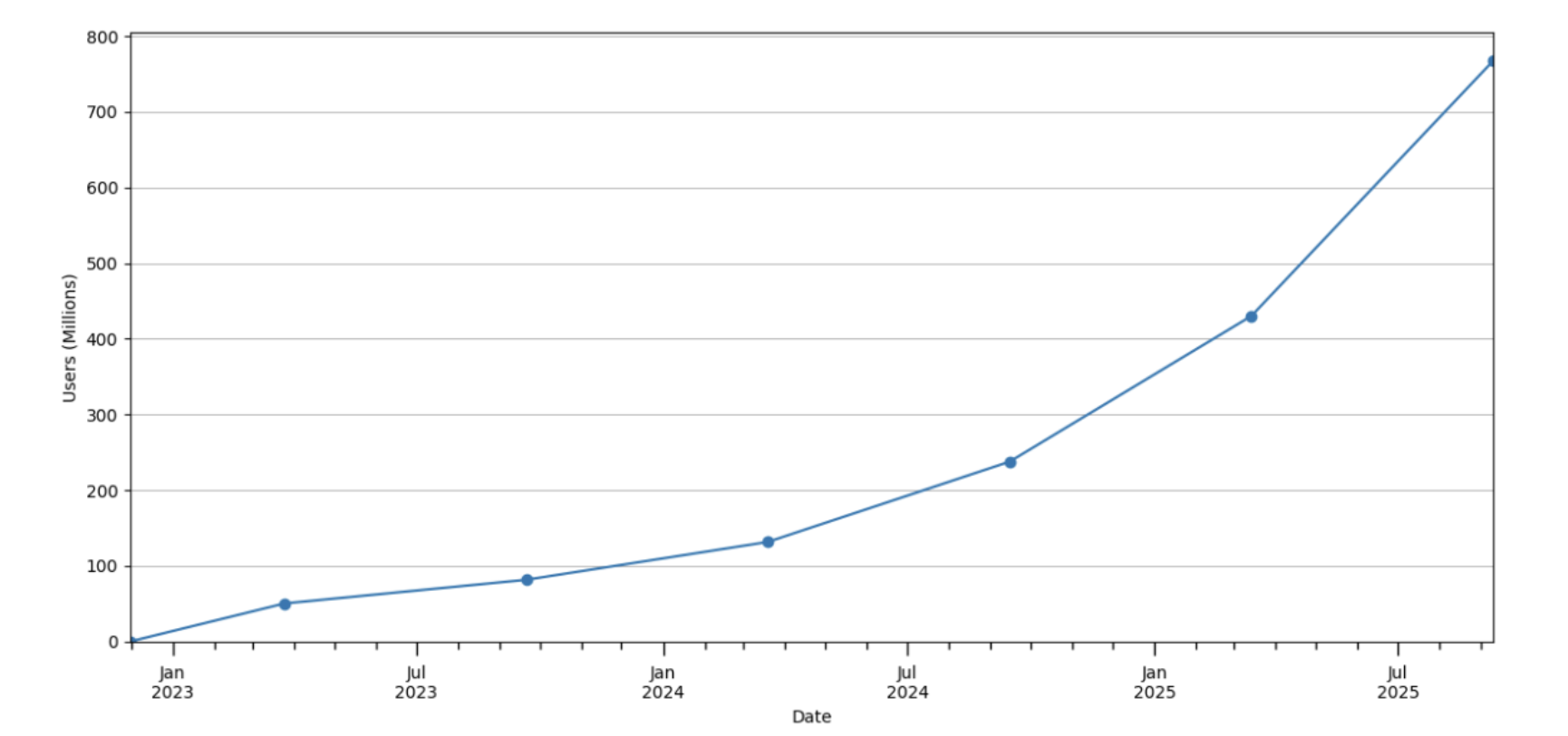
Click to enlarge 🔍
Monetising free users becomes OpenAI’s next big growth driver
OpenAI’s rising revenue forecasts highlight the shift toward monetising discovery within AI search itself. With hundreds of millions using ChatGPT for free, the company is layering new revenue streams around this behaviour - from sponsored results and in-chat ads to product recommendations and commerce integrations.
It’s a signal of where value is moving: as users increasingly search and act inside conversational platforms, attention and monetisation follow. The result is a 2030 forecast climbing from $174 billion to nearly $200 billion in just two quarters - fuelled by confidence that AI search will become a major advertising channel in its own right.
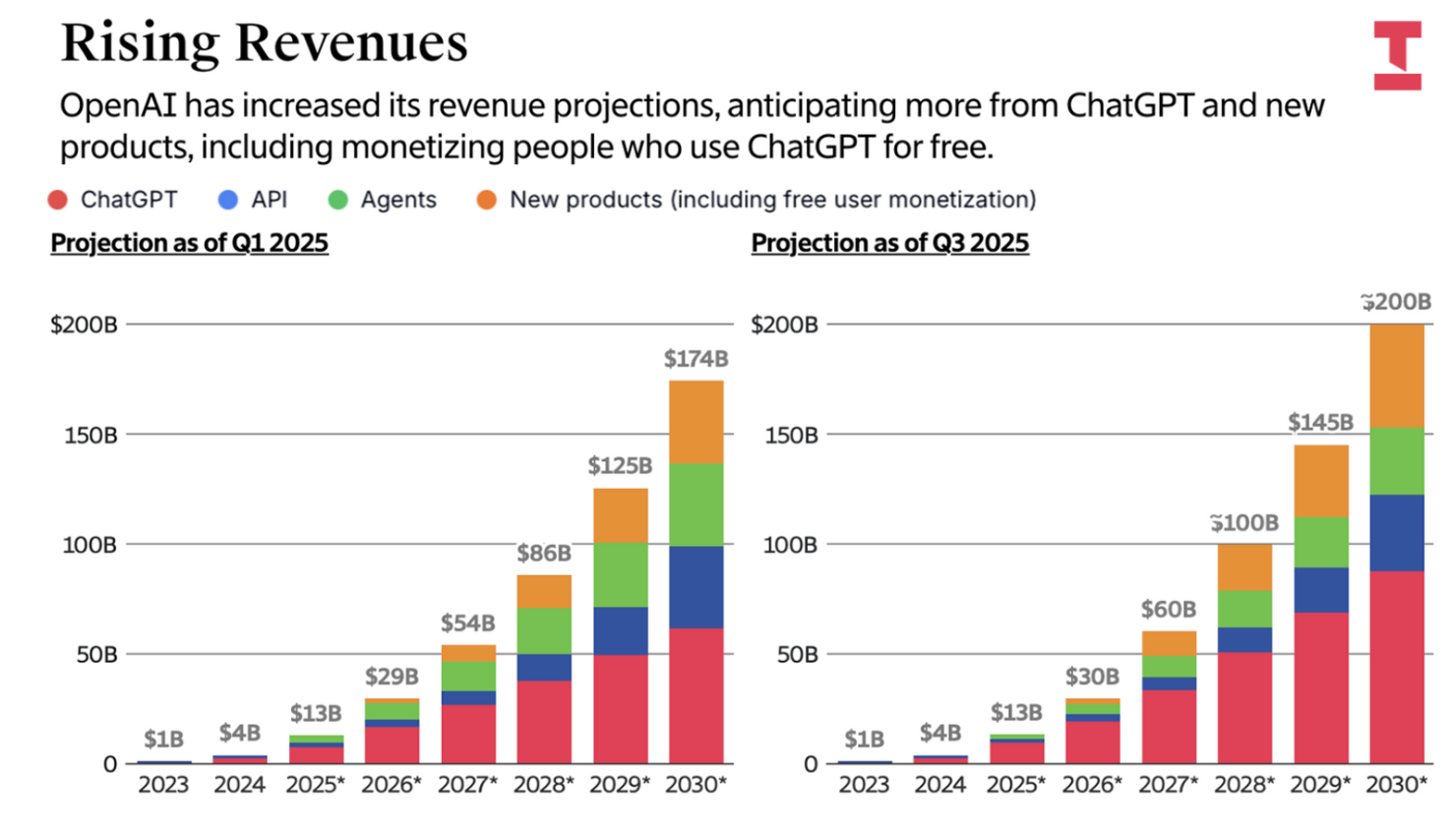
Click to enlarge 🔍
The rise of information-seeking in ChatGPT
Over the past year, ‘seeking information’ has become one of ChatGPT’s fastest-growing use cases, rising steadily to account for 24.4% of all conversations. The trend suggests users are shifting from creative experimentation toward using AI as a search and discovery engine.
As more people turn to ChatGPT to answer questions, compare options, and make informed choices, the boundary between search intent and shopping intent continues to blur - signalling a major opportunity for e-commerce brands to appear directly in these high-intent AI interactions.
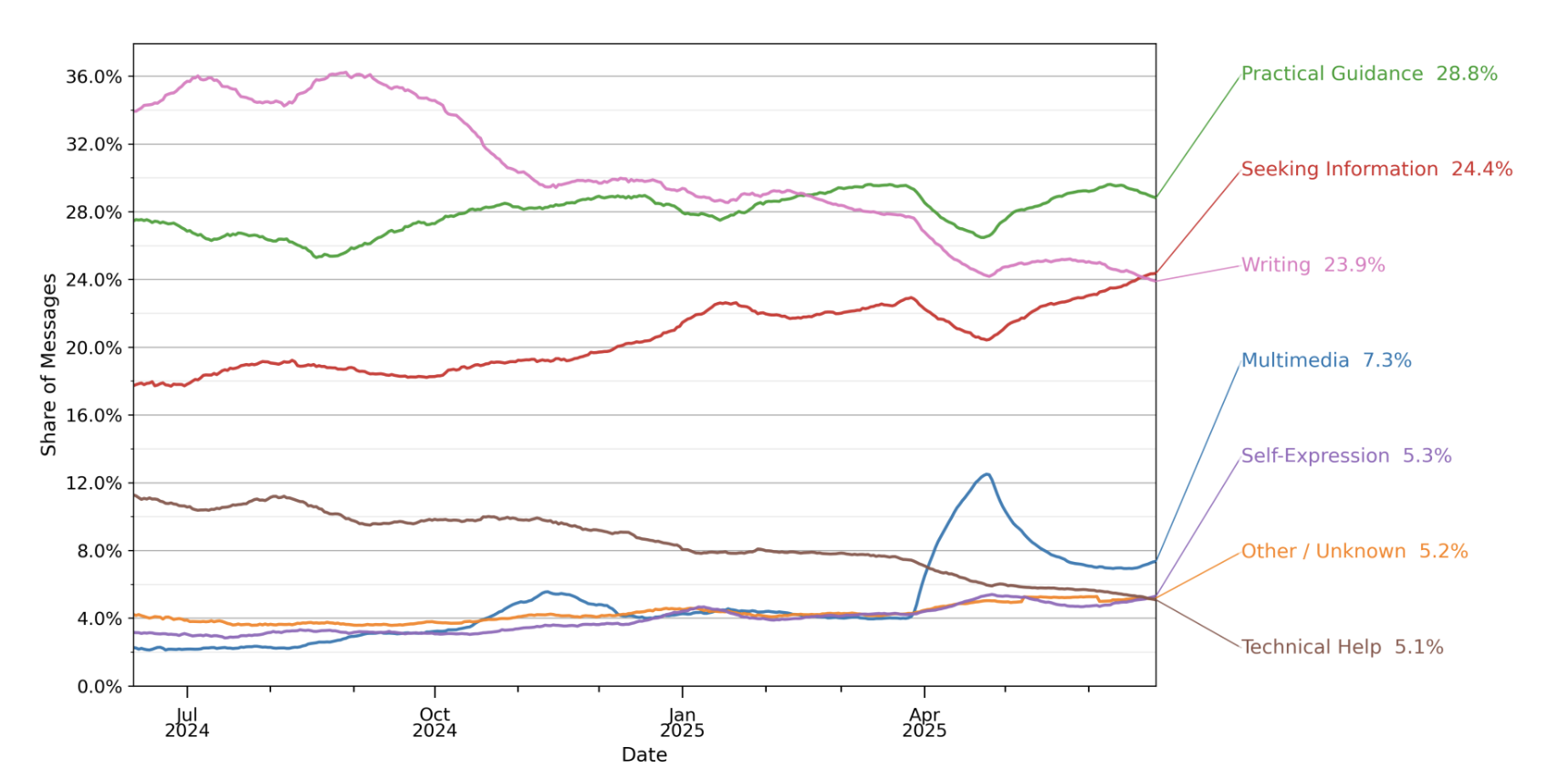
Click to enlarge 🔍
More customers are mentioning ChatGPT in brand attribution data
Data from Fairing’s attribution analytics dashboard shows a sharp rise in customers referencing ChatGPT or other LLMs when asked how they discovered a brand - jumping from near zero in mid-2024 to 11.8% by April 2025.
This upward trend highlights how AI search is moving from experimentation to everyday influence, with tangible visibility impact for brands. As consumers increasingly credit AI tools for product discovery, tracking mentions of ChatGPT is fast becoming a new marketing KPI.
If you can influence customer call monitoring, consider implementing
Natterbox
- a platform that helps you analyse and understand key mentions during customer calls.
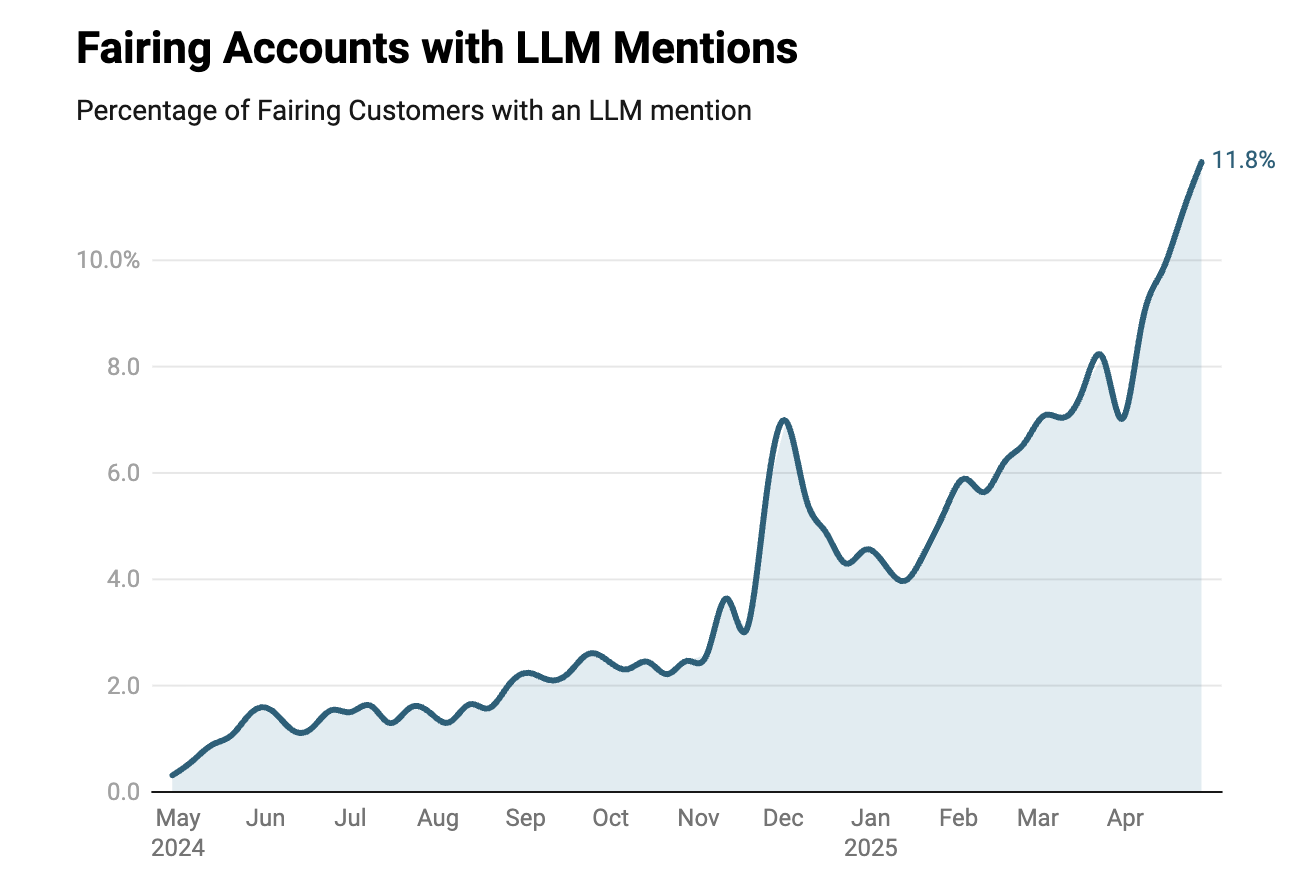
Click to enlarge 🔍
AI search ad spend is set to explode
According to eMarketer, US advertisers are projected to spend nearly $26 billion on AI search ads by 2029 - up from just over $1 billion in 2025. That’s a leap from 0.7% to 13.6% of total search ad budgets in only four years.
The chart underscores how quickly brands are reallocating budgets toward generative platforms such as ChatGPT, Perplexity, and Google’s AI search experiences - where consumers are increasingly beginning their journeys. As AI summaries and conversational results become the new front door to the web, ad dollars are following - turning AI search into one of the fastest-growing segments in digital marketing.
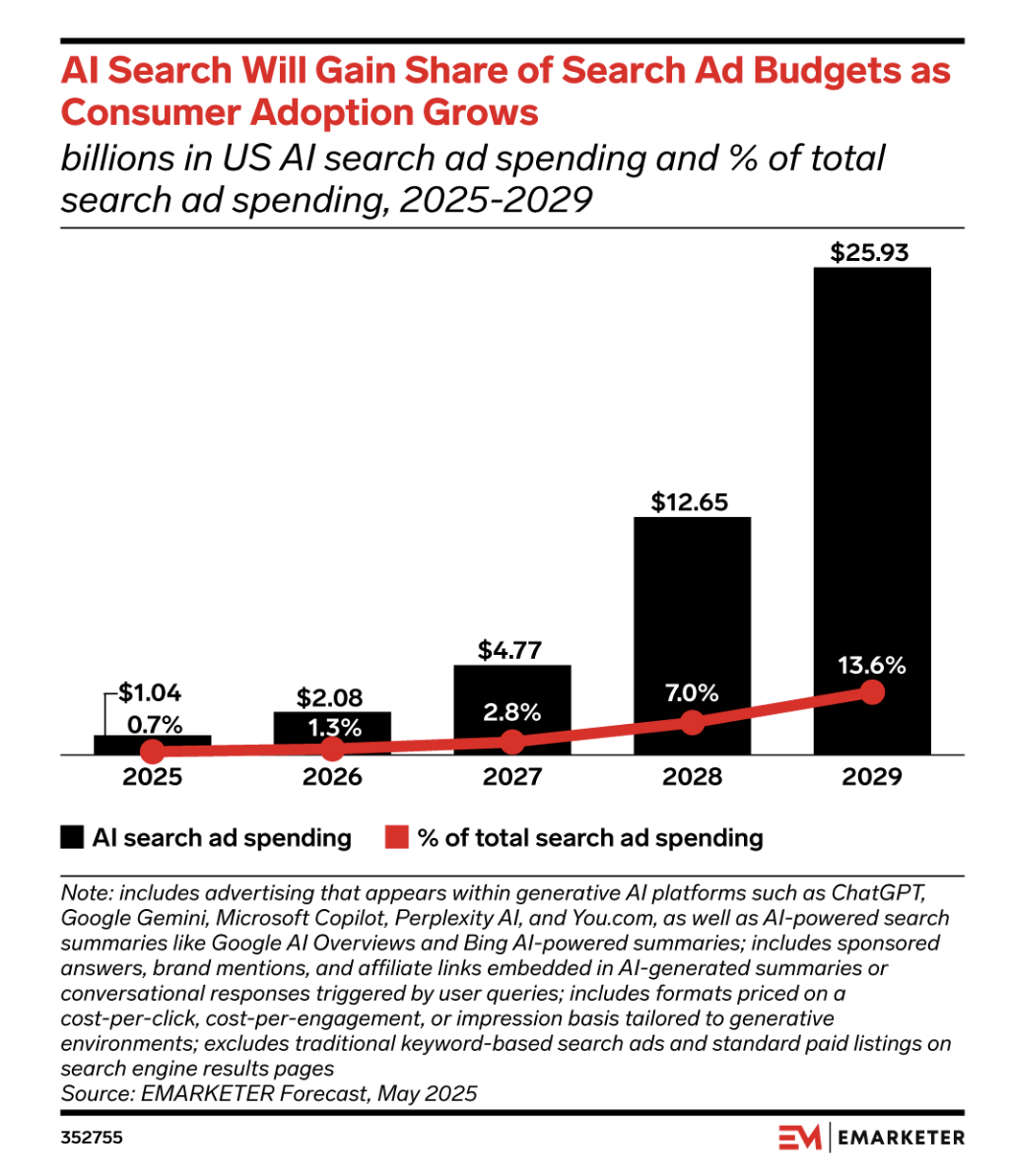
Click to enlarge 🔍
